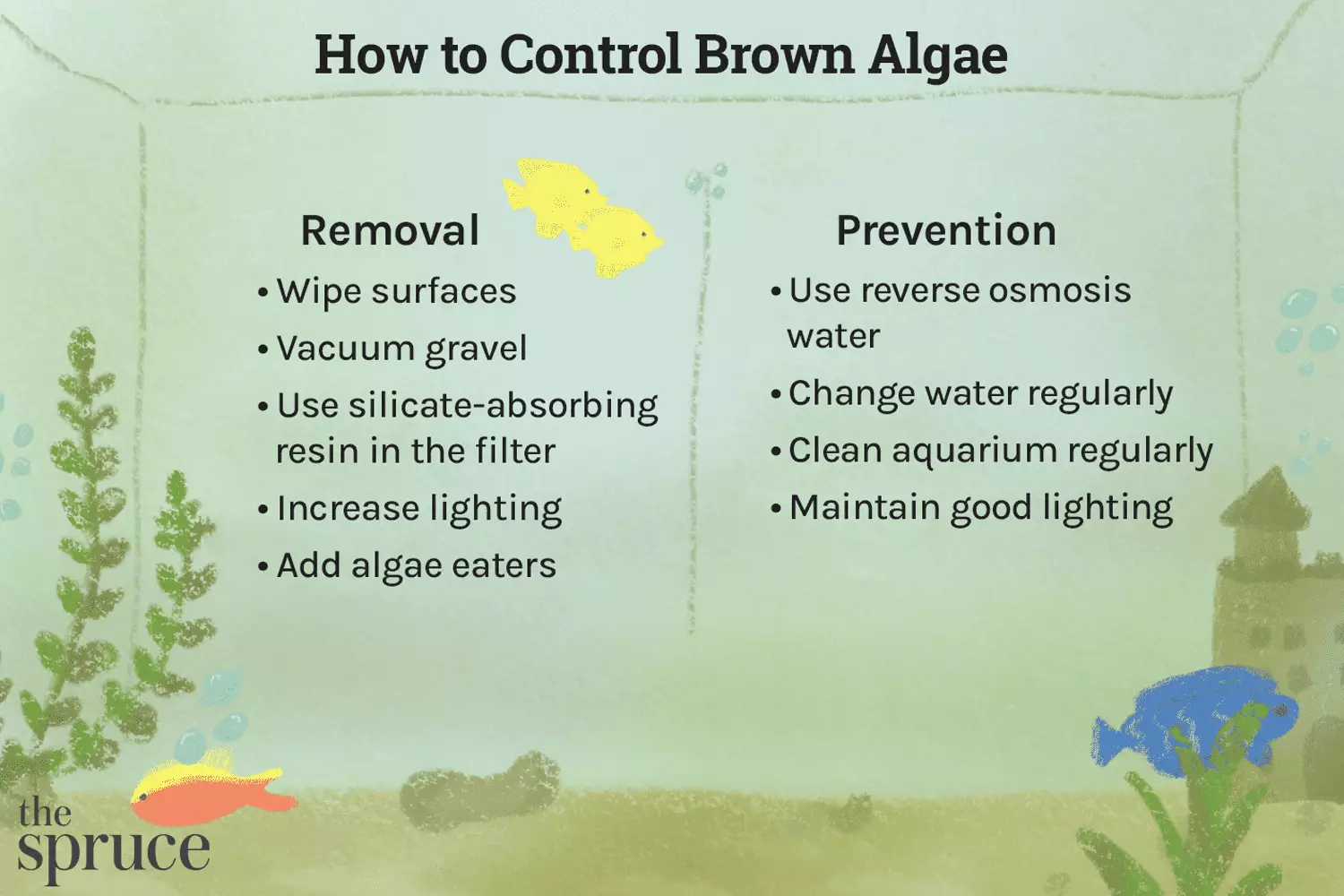Aquarium enthusiasts frequently encounter a peculiar yet common challenge known as Silica Algae or Brown Algae. Characterized by unsightly brown patches on the tank’s gravel or glass surfaces, this algae can rapidly proliferate once established. Particularly prevalent in newly set-up aquariums, the appearance of Brown Algae can stir anxiety among novice fish keepers. However, there are effective strategies to manage and prevent its growth, allowing enthusiasts to maintain a beautiful aquatic environment.
Silica Algae, commonly referred to as Brown Algae, is predominantly comprised of diatoms belonging to the Class Bacillariophyceae. These unicellular organisms can exist solo or form colonies and are most often found in both freshwater and saltwater environments. What differentiates diatoms from other types of algae is their unique external structure: they create an opalescent cell wall that resembles a crystalline covering.
Naturally, these organisms play a crucial role in aquatic food webs, performing photosynthesis to convert light into energy, which contributes significantly to their habitat’s ecological balance. They are, however, not the dreaded forms of algae often associated with tank troubles. While diatoms can create a thin, unsightly film across various surfaces, their presence does not typically harm fish. Instead, they may indicate an underlying imbalance in tank chemistry or excessive nutrient levels that require attention.
Identifying the Causes of Brown Algae Growth
The emergence of Brown Algae often serves as a symptom of more significant water quality issues. Various factors contribute to the proliferation of this unwanted guest, notably excess silica or nitrate levels in the water. Excessive silica can infiltrate aquariums through high-silicic acid tap water or certain substrates like silica sand. Similarly, elevated nitrate levels often arise from uneaten fish food, decaying organic matter, or an overly populated tank.
Aquarium owners should conduct regular water tests to monitor parameters such as silicate and nitrate levels. High readings are a clear indicator of poor water quality that needs immediate redress. Regular partial water changes, along with ensuring that uneaten food and waste are promptly removed, are critical in controlling these nutrient levels.
Managing Brown Algae is not a daunting task, provided that aquarium owners are proactive. One key strategy involves implementing preventative measures to thwart its growth at the source. Maintaining optimal lighting conditions is paramount; tanks in dark environments are particularly susceptible to algae growth due to the absence of competition from beneficial green plants.
For those already dealing with Brown Algae, effective cleaning techniques can significantly reduce its presence. The algae typically do not adhere strongly to surfaces, allowing for straightforward removal. Utilizing an aquarium-safe algae scraper or a soft cloth to wipe the tank’s glass and decorations is usually sufficient. Similarly, vacuuming the substrate will effectively eliminate diatom accumulations lying at the bottom.
As a complementary approach, stocking the aquarium with specific fish species that naturally consume diatoms can help control brown algae population. In freshwater setups, incorporating species such as the plecostomus or otocinclus catfish can offer a natural cleanup solution. Meanwhile, in saltwater tanks, various invertebrates and fish species are known for their grazing habits on diatoms.
Long-Term Maintenance for a Healthy Aquarium
The key to preventing Brown Algae from becoming a recurring issue lies in adopting a rigorous maintenance routine. Regular water changes are essential, ideally replacing around 10-15% of the tank water weekly, to help manage excess nutrients. Additionally, monitoring light exposure is invaluable; ensuring that the aquarium receives around eight hours of light daily encourages healthy plant growth, which can outcompete algae.
Investing in quality water filtration systems, such as reverse osmosis units, is another effective strategy, especially for aquarists using tap water high in nitrates or silica. Utilizing a silicate-absorbing resin in the filter can mitigate silicate levels, providing an additional layer of protection against algal growth.
Though managing algae presents challenges, the fulfillment derived from maintaining a vibrant, algae-free aquarium is well worth the effort. With diligence and an understanding of the underlying causes, enthusiasts can enjoy a beautiful aquascape filled with healthy aquatic life. Prompt attention to any algal presence not only preserves visual appeal but safeguards the well-being of the ecosystem within the aquarium, ensuring a thriving environment for both fish and plants alike.

